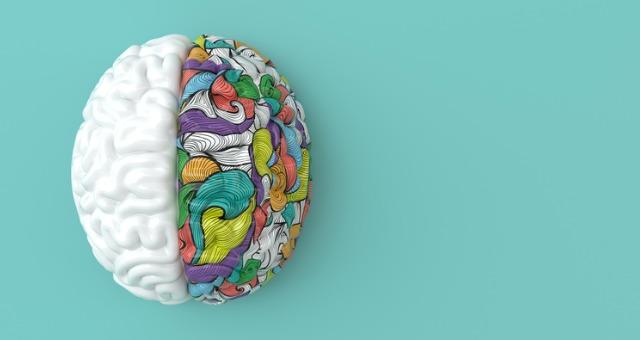How Mindfulness Transforms Education: The Role and Benefits in Modern Classrooms
Keywords: mindfulness in education, benefits of mindfulness, mindfulness in classrooms, mindfulness practices, modern classroom strategies, student well-being, teacher stress management
Introduction
Modern education is rapidly evolving too meet the broader needs of students. Beyond academic learning,educators are increasingly prioritizing students’ emotional health and personal advancement. Mindfulness in education has emerged as a powerful tool, transforming classrooms into nurturing environments where students thrive both intellectually and emotionally. In this extensive guide, we’ll explore the role and benefits of mindfulness in modern classrooms, showcase effective strategies, and examine real-world case studies that highlight its positive impact.
What is Mindfulness in Education?
At its core, mindfulness is the practice of being fully present and aware in the moment, acknowledging thoughts and feelings without judgment. In the context of education, mindfulness involves integrating these principles into the classroom to foster a supportive and focused environment conducive to learning.
- Focus: mindfulness helps students direct their attention and stay engaged.
- Self-awareness: It encourages reflection on personal emotions, thoughts, and behaviors.
- Emotional regulation: Students learn to manage stress, anxiety, and impulse responses.
- Compassion: Mindfulness cultivates empathy and kindness towards oneself and others.
The Role of Mindfulness in Modern classrooms
The integration of mindfulness practices is reshaping the educational experience. From simple breathing exercises to guided meditations and mindful movement, these techniques are now being harnessed as modern classroom strategies to enhance teaching and learning.
- Enhancing Focus and Concentration: Mindfulness activities, such as focused breathing or body scans, train students to pay attention, minimizing distractions and improving academic performance.
- Supporting Emotional Intelligence: Through mindful exercises, students develop self-awareness, empathy, and resilience—skills essential for lifelong success.
- Reducing Stress and Anxiety: Stress management is critical in today’s fast-paced learning environments. Mindfulness helps students and teachers alike to cultivate calm, reducing burnout and emotional exhaustion.
- Promoting Positive Classroom Culture: Engaged, mindful students contribute to harmonious classrooms, fostering mutual respect and collaboration.
Key Benefits of Mindfulness in Education
Scientific research consistently underscores the benefits of mindfulness for both students and educators. Let’s dive into some of the most important advantages:
- Improved Academic Outcomes: Increased attention span and better data retention lead to higher test scores and engagement.
- Better Emotional Regulation: Students learn coping mechanisms for anxiety, anger, and frustrations, resulting in fewer behavioral issues.
- Enhanced Social Skills: Mindfulness practices build empathy, active listening, and conflict resolution abilities.
- Reduced Classroom Disruptions: A calm, mindful class environment minimizes conflicts and disciplinary measures.
- teacher Well-being: Educators experience lower stress levels,leading to greater job satisfaction and effectiveness.
“A growing body of evidence demonstrates that incorporating mindfulness in classrooms helps students feel safer, more engaged, and ready to learn.” – Mindful Schools Research Review
prosperous Case Studies: Mindfulness in Action
Case Study 1: Oakland Unified School District, California
The Oakland Unified school District introduced a structured mindfulness program across its elementary schools. over two years,educators reported:
- Suspensions decreased by 50%
- Teachers noted significant improvements in classroom behavior
- Students expressed feeling “calmer” and “more in control” of their emotions
Case Study 2: MindUP™ in British Columbia
MindUP™,a mindfulness-based curriculum,was implemented across multiple schools in British Columbia.after one academic year:
- Over 80% of students reported reduced anxiety and better focus
- Teachers experienced an increase in job satisfaction
- Parents observed improved emotional regulation at home
Frist-Hand Experience: Educators Speak Out
Teachers who have embraced mindfulness in their classrooms consistently highlight transformative results. Here are a few testimonials:
- “Since introducing daily mindful moments, my students’ ability to focus and work through challenges has soared.” – 5th Grade Teacher,Chicago
- “Mindfulness isn’t just for students; it’s helped me manage the pressures of teaching and stay connected to my purpose.” – High School English Teacher, Leeds
- “The entire classroom feels different—quieter, kinder, more cohesive.Mindfulness made learning joyful again.” – Primary School Teacher, Sydney
Practical Tips: Incorporating Mindfulness Practices in Classrooms
Integrating mindfulness dose not require a complete curriculum overhaul.Here are practical tips to get started:
- Start with Short Practices: Begin with 2–5 minutes of mindful breathing or silent reflection at the start or end of class.
- Model Mindful Behavior: Teachers should practice mindfulness themselves, setting a positive example.
- Introduce Mindful movement: Yoga poses or stretching can help younger children connect mind and body.
- Encourage Mindful Listening: Practice attentive listening during discussions—for both students and teachers.
- Leverage Mindfulness Tools: Consider apps,guided audio recordings,or visual aids that support mindfulness exercises in class.
- Reflect and Share: Regularly invite students to share their experiences and feelings about mindfulness practices.
top Mindfulness Programs and Resources
- Mindful Schools: Offers online courses and classroom activities.
- Calm Classroom: Provides scripted mindfulness practices for all age groups.
- Headspace for Educators: Free access to meditation guides and workshops.
- Smiling Mind: designed specifically for schools with age-appropriate curricula.
Potential Challenges & How to Overcome Them
While the benefits of mindfulness in education are considerable, implementation can come with challenges:
- Initial Resistance: Some students or staff may hesitate to participate. Begin with optional, low-pressure activities.
- Time Constraints: Incorporate rapid mindfulness exercises into existing routines rather than adding extra tasks.
- Consistency: Regular practice is key. Integrate mindfulness daily rather than sporadically for lasting benefits.
Conclusion
Mindfulness transforms education by supporting student well-being, boosting academic achievement, and cultivating positive, resilient learning communities. With a growing body of research supporting its efficacy and a wealth of accessible resources, incorporating mindfulness in classrooms is not only beneficial but essential for the challenges of 21st-century learning. Whether you’re an educator, parent, or school leader, embracing mindfulness can set the stage for healthier, happier, and more successful learners.
Ready to make mindfulness part of your school community? Start small, stay consistent, and watch your classroom transform. For further reading and actionable guides, explore the recommended resources listed above.

